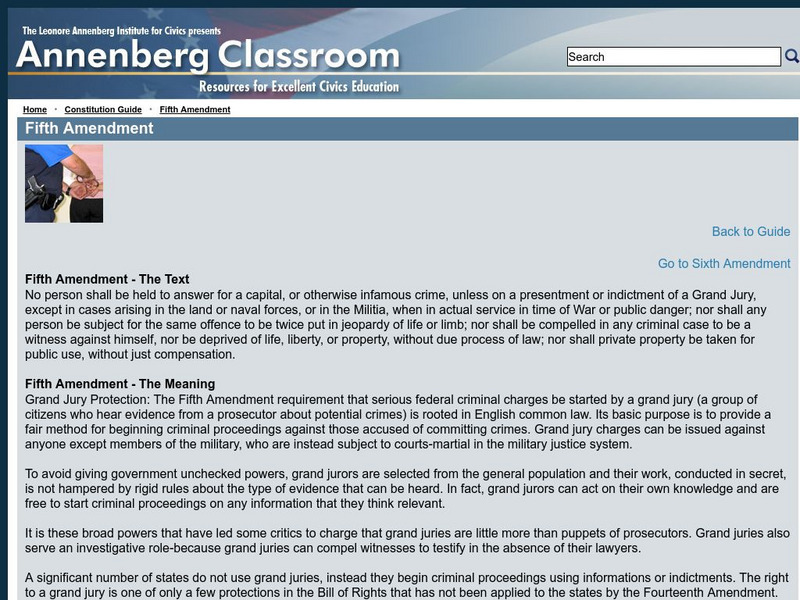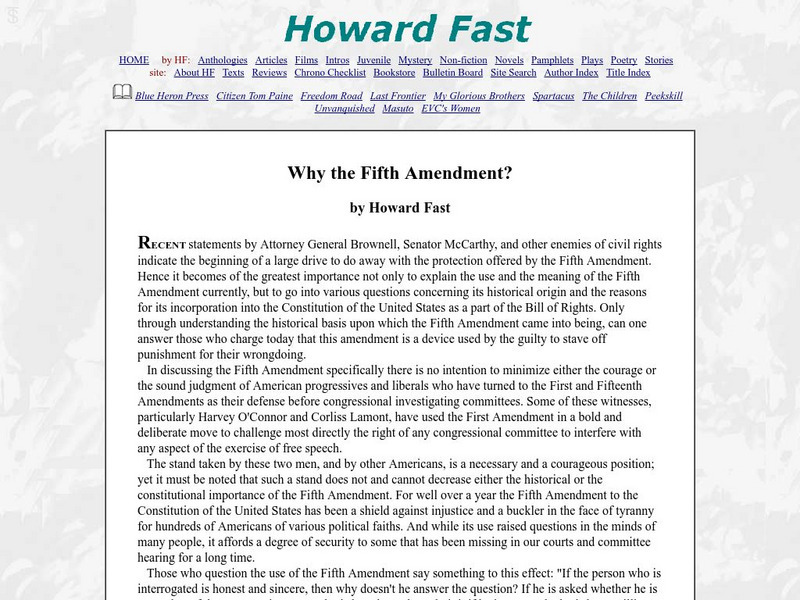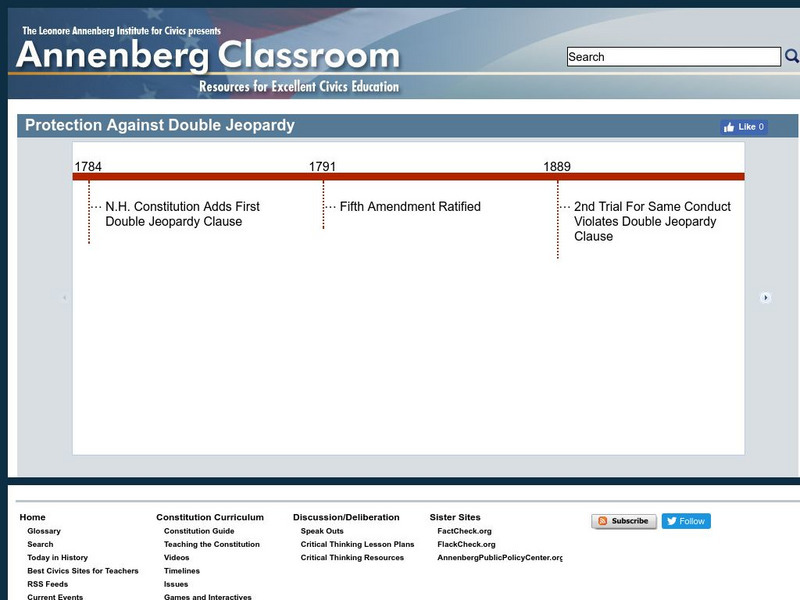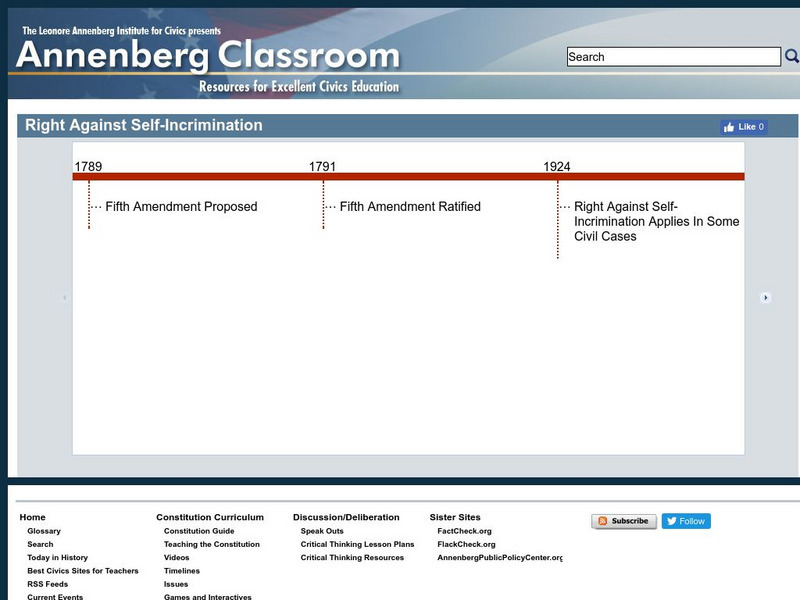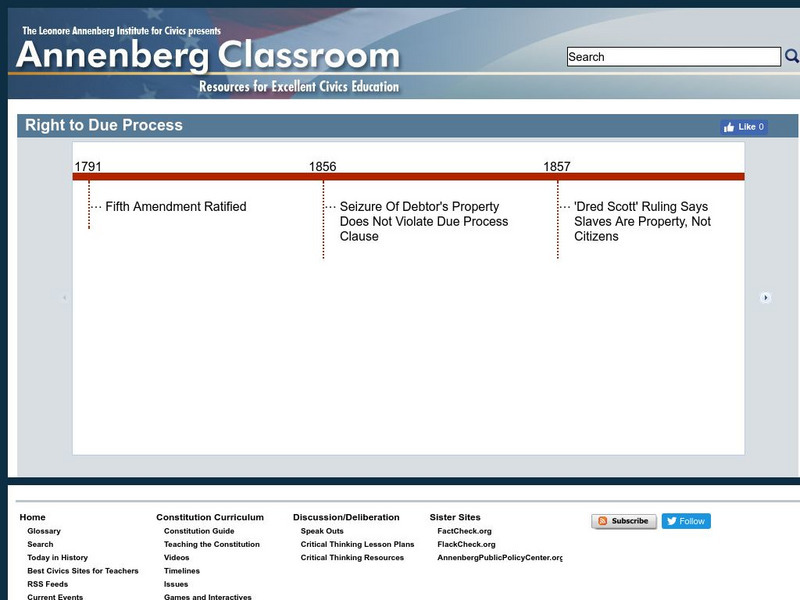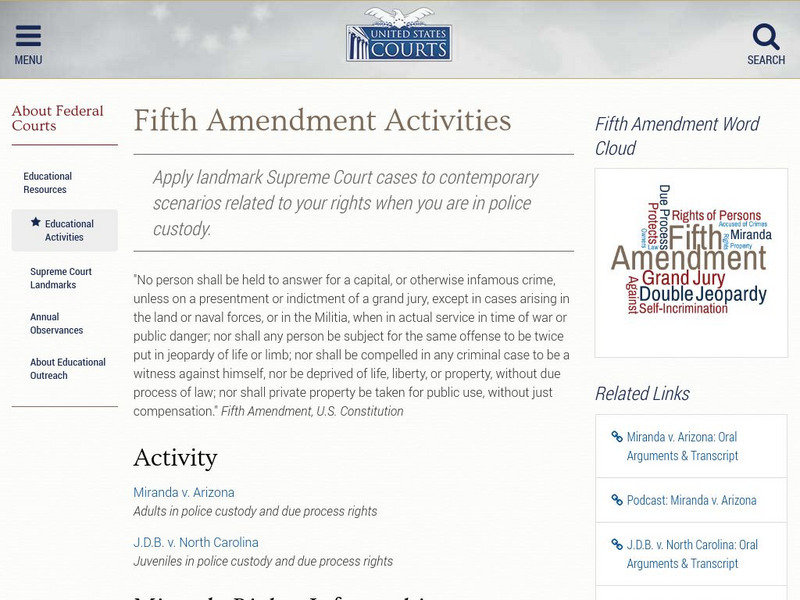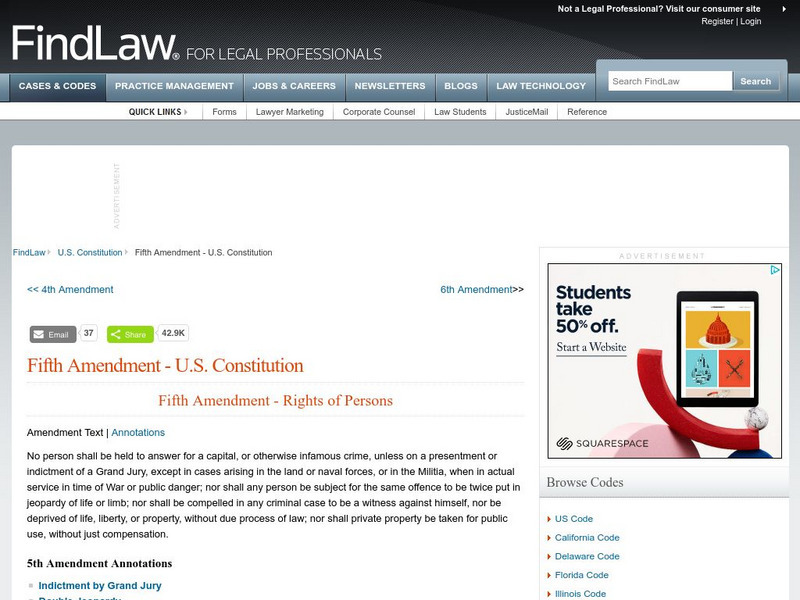Curated OER
Due Process
Students explore the concept of due process. In this American law lesson plan, students view a 9-slide PowerPoint presentation on the topic and then respond to 3 discussion questions about the 5th and 14th amendments.
Curated OER
The Fourth and Fifth Amendments: How Do They Protect Our Rights?
Students view a PowerPoint presentation on the fourth and fifth amendments. In this history lesson, students explore the details of the fourth and fifth amendments and then answer questions that summarize the presentation.
Other
Our Courts: Bill of Rights: You Mean I've Got Rights? [Pdf]
A great, active lesson about the Bill of Rights. Students compare rights they think they should have with the rights in the actual amendments to the U.S. Constitution. The language of the amendments is broken down into simpler English so...
Annenberg Foundation
Annenberg Classroom: Fifth Amendment
Text and full descriptive summary of the 5th Amendment to the Constitution. Reference accompanied by links to related material including, video, timeline, and news sources.
Wikimedia
Wikipedia: Fifth Amendment to the United States Constitution
This encyclopedia article explains what it means to plead the Fifth, and provides an excerpt from the Fifth Amendment.
Other
Why the Fifth Amendment? By Howard Fast
This article, written by Howard Fast in 1954, attacks the government and Senator Joseph McCarthy for leading away from the rights protected by the amendment.
Annenberg Foundation
Annenberg Classroom: That's Your Right Game
That's Your Right is a card where you use the Bill of Rights to defend your freedom.
Annenberg Foundation
Annenberg Classroom: Protection Against Double Jeopardy
Check out this interactive timeline of the protection against double jeopardy in the United States.
Annenberg Foundation
Annenberg Classroom: Right Against Self Incrimination
Check out this interactive timeline of the right against self-incrimination in the United States.
Annenberg Foundation
Annenberg Classroom: Right to Due Process
Check out this interactive timeline of the right to due process in the United States.
Annenberg Foundation
Annenberg Classroom: Takings Clause
Check out this interactive timeline of the takings clause in the United States.
Illinois Institute of Technology
The Oyez Project: Rochin v. California
Here you will find an abstract summary and the vote of each justice upon the Rochin v. California case.
Other
Us Courts: Fifth Amendment Activities
Two activities and lesson plan apply landmark Supreme Court cases on the Fifth Amendment and the right to due process or fair trial for adults and juveniles accused of a crime.
PBS
Wnet: Thirteen: The Supreme Court: Landmark Cases: Dred Scott v. Sandford (1857)
PBS features a summary of the landmark Supreme Court case of Dred Scott v. Sanford which ruled that African Americans are not American citizens, and therefore could not sue in federal court. Decision written by Chief Justice Roger B. Taney.
iCivics
I Civics: Korematsu v. United States (1944)
This mini-lesson covers the basics of the Supreme Court's decision that determined the government acted constitutionally when it detained people of Japanese ancestry inside internment camps during World War II. Students learn what...
iCivics
I Civics: Miranda v. Arizona (1966)
This mini-instructional activity covers the basics of the Supreme Court's decision that prohibited a suspect's statements from being used as evidence unless the suspect has been advised of his or her rights to remain silent. Middle...
iCivics
I Civics: Interpreting the Constitution
Students analyze real-life cases interpreting the 8th and 5th amendments to see whether they interpret the Bill of Rights the same way the Supreme Court did and discover how tricky interpreting the Constitution really is.
Thomson Reuters
Find Law: Fifth Amendment
This resource provides both the text of the amendment and annotations as explanation of various words and phrases.




![Our Courts: Bill of Rights: You Mean I've Got Rights? [Pdf] Lesson Plan Our Courts: Bill of Rights: You Mean I've Got Rights? [Pdf] Lesson Plan](https://d15y2dacu3jp90.cloudfront.net/images/attachment_defaults/resource/large/FPO-knovation.png)
